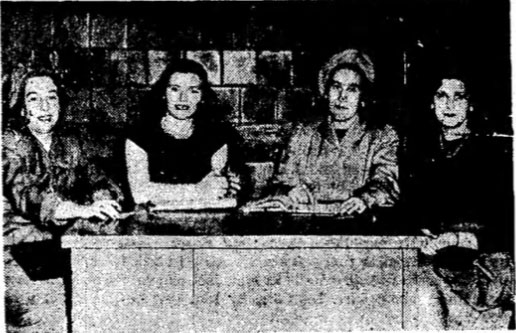Courtesy of JTA.
An archival photo shows a choreography class at the 92nd Street Y led by Doris Humphrey circa 1915
(JTA) — The Jewish people have long taken pride in their moniker, People of the Book. But Jews are also people who dance — and not just at weddings and bar or bat mitzvahs, or on holidays like Simchat Torah.
Like many other communities, Jews dance to foster and build community, and to come together for spiritual, social and recreational occasions. They dance to express unity and individuality, their peoplehood and creativity. Simply put, they dance to belong.
An illuminating exhibit at the venerable 92nd Street Y, New York — which has been celebrating its 150th anniversary this year, rebranded as 92NY — explores the Jewish community’s rich movement traditions. Drawing upon 92NY’s extensive archive of photos, programs, posters and more, “Dance to Belong” tells the story of the vibrant and creative community Jews built and uplifted through dance.
Among the many treasures on view are a 1915 photo depicting a dance class with lines of women clad in white tunics, their arms waving, a la Isadora Duncan; a 1940 poster advertising an evening by ballet and Broadway choreographer Agnes de Mille, featuring maverick modern dancer Sybil Shearer; and a 1943 playbill for a concert starring flamenco greats La Argentinita and Jose Greco.
“I was asked by Jody Arnhold, who is the chairwoman of the board [of 92NY], to curate a show on the 150th anniversary that would celebrate dance at the Y,” said cultural historian Ninotchka Bennahum, a professor of theater and dance at University of California Santa Barbara and a co-curator of the exhibit.
Dance has been part and parcel of 92NY since it opened its doors in 1874 as the Young Men’s Hebrew Association, founded by a group of German Jewish businessmen to serve the social and spiritual needs of the burgeoning American Jewish community. First located on West 21st Street, then 42nd Street, the organization moved uptown several times to 65th Street in 1899, then 92nd and Lexington the next year. In 1930, the current digs at 92nd Street and Lexington Avenue opened.
According to Bennahum, 92NY became an essential meeting space because Jewish immigrants in the late 19th and early 20th centuries, like Jews today, weren’t necessarily affiliated with synagogues or other Jewish organizations, nor did they always speak the same language or come from the same socio-economic class. The 92NY served as a crossroads for Jews across religious, national, economic and social identities.
“This exhibit confirms the Y’s longevity and significance of community-based dancing not as something tertiary, but as something primary,” Bennahum said of “Dance to Belong,” emphasizing that the institution has “creat[ed] a continuous space for dance in always giving sanctuary to contemporary artists, in believing in Jewish dance artists and in believing in all artists.”
“Dance to Belong” is on view at the Milton J. Weill Art Gallery and the Kaufmann Concert Hall lobby at the 92nd Street through Dec. 31. Admission is free.





